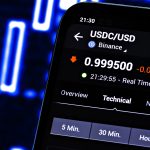This article is the fourth in Chadly\’s Core Series. Be sure to read the previous entry here.
The value of the things we own can change over time, and it’s important to understand the range of volatility.
Broadly speaking, assets are things that we perceive to have use or value. If we are more specific and focus on financial assets, we are generally discussing liquid assets, meaning they can be exchanged quickly for other assets. This category of liquid financial assets includes but is not limited to cash, shares, bonds, mutual funds, and cryptocurrencies.
What are Volatile and Stable Assets?
Volatility describes the degree to which something is likely to change rapidly and with what level of predictability. In the context that we are discussing stable and volatile assets, we are explicitly discussing whether or not they are likely to be exchangeable for a relatively consistent amount of equivalent assets or goods. An example would be cash – if we can consistently (and historically, too) exchange an asset for similar amounts of other assets, it would be considered “stable.”
On the other end of the spectrum, if this exchange rate between assets regularly undergoes wild swings, this asset would be considered to be more volatile. A good pair of examples would be Bitcoin and stablecoins, with an exchange to fiat being the focus.
Historically, Bitcoin has been notoriously volatile. Its price has fluctuated wildly since its inception. Thus, any value invested into BTC has also changed dramatically (and often!) over the past decade. In contrast, stablecoins, with the name itself being a prime hint, are intended to offer stability – many are “pegged” to the dollar.
Applying Knowledge
Depending on an individual’s risk tolerance, they will hold a different proportion of volatile assets to stable assets. Generally, someone with a higher risk tolerance will be more interested in holding larger amounts of volatile assets. They perceive these as an opportunity for significant returns but must also recognize that they are at greater risk of losing value.
On the other hand, someone with lower risk tolerance is more likely to be interested in stable assets. This is because their primary concern is capital preservation – they wish to retain the value they already have and seek reassurance that they will have a similar, exchangeable value in the future.








